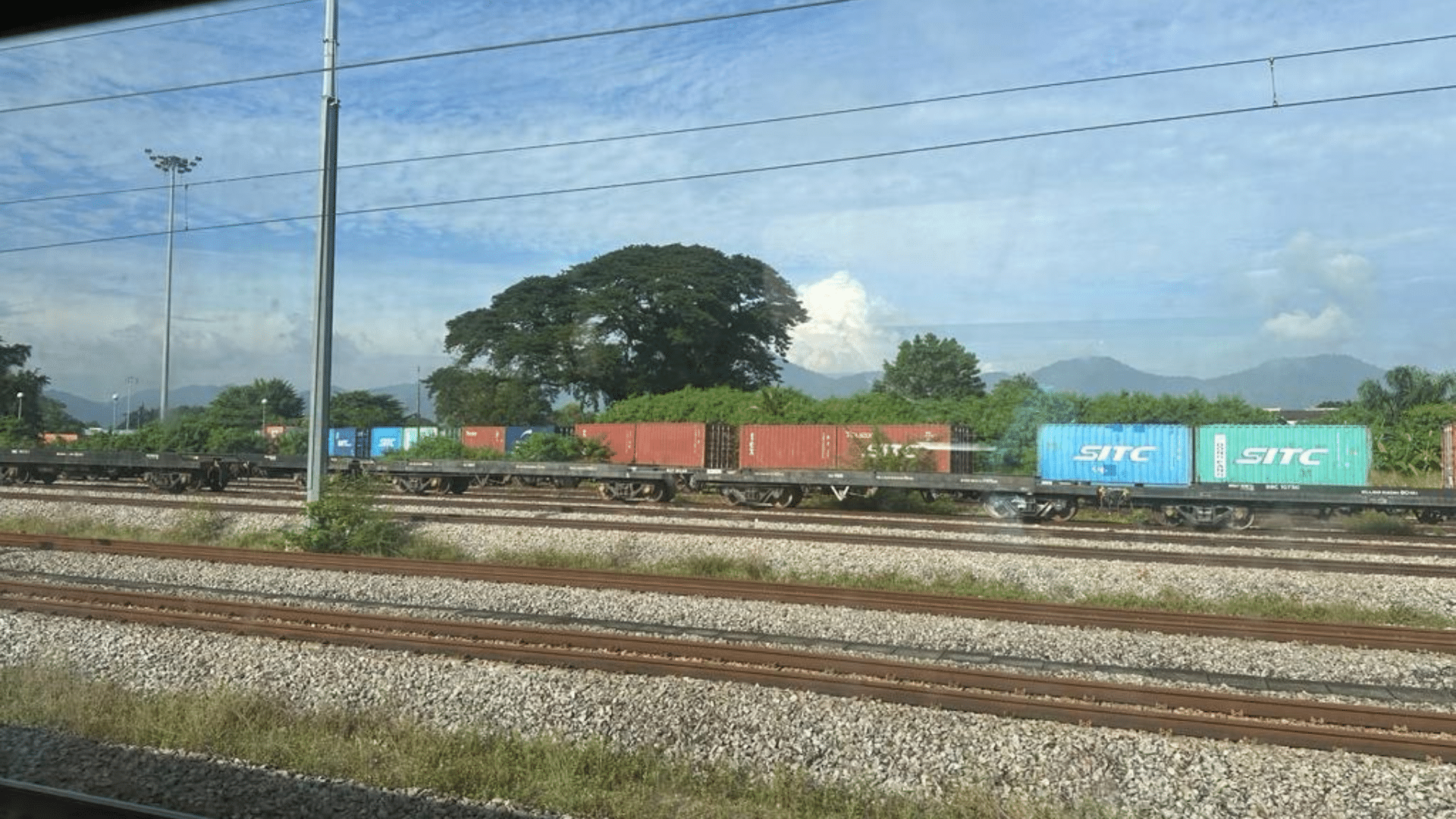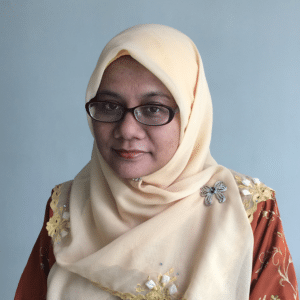
Finding a New Audience
When I received the email from the Singapore National Arts Council offering me the opportunity to apply for the virtual residency at NCW, I read it quickly. Then my fingers did a flurry of moves, and I realised I had deleted the mail — permanently. Was it by accident or because I was sure the officer had sent it to me by mistake? How would I have qualified to be on their list of candidates? (This, by the way, is likely the effect of imposter syndrome that I tend to experience.) But common sense and curiosity prevailed, and I requested the email be sent to me again. After the briefing with NAC, I realised the residency would be an excellent opportunity for me to learn. My literary journey as a writer and translator thus far has been predominantly in publications for children. The residency would allow me to go further into translation, specifically poetry translation. I was also curious about the concept of transcreation.
I proposed translating a selection of poems from Gandoura by Hartinah Ahmad (b. 1955), who won the Singapore Literary Prize for Malay Poetry in 2022. The poems were written in Singapore and different parts of the world. I knew of Hartinah first as a much-lauded song lyricist. Then in 2019, I read her poem ‘Burung-Burung Kota Bijaksana’ (Birds of a Smart City), a commentary on life where dreams have died in the hurried pursuit of earning a living within a small, highly developed space at the cost of losing a lifestyle that was once steeped in tradition and close to nature. Is it worth it, Hartinah asks, to be enemies in life when, in death, there is the possibility that you would be sharing a single plot in the cemetery? (In land-scarce Singapore, the remains of a Muslim will be exhumed from their individual grave after 15 years and then re-interred in a smaller plot with the remains of seven other individuals.)
I am in awe of Hartinah’s ability to select and weave words into verses and imbue them with deep meaning and humanity. Verses that provoke, soothe, and stir, and sound beautiful when read aloud. For Singapore Malay literature, we see more translations of works by male writers such as Cultural Medallion winners Suratman Markasan and Mohamed Latiff Mohamed. There is definitely room to shine a spotlight on works by women who may relay similar themes through a different lens or tone. For instance, Hartinah’s ‘Pulau Kita’ (Our Island) wryly comments upon the state of living affected by decisions by the powers-that-be, in a narration of a visit to the market.
However, when my application was approved, a niggling question kept coming back: have I bitten off more than I can chew?
Translating poetry from Malay to English is akin to me dipping my toe into the ocean. When I started to read Hartinah’s poems with a translator’s eyes and ears, a sliver of hesitation began to seep in. I am a writer of short stories and children’s stories. I started my creative writing journey in 2014. I see the importance of getting more Singapore Malay literature to non-Malay speakers or readers ‘out there’, but am I capable of the task? Thankfully, in a Zoom session with representatives from NCW, I was encouraged to watch a video on Imposter Syndrome hosted by Daniel Hahn. The video and my first session with my mentor, Shash Trevett, gave me some reassurance.
Throughout the residency, I was given the opportunity to meet translators, writers and poets, such as Janani Ambikapathy and Daniel Hahn, who are far more experienced, as well as to be mentored by Shash, whose kind and insightful comments have (and still do) helped me navigate this translation journey – one that I can only describe as a fulfiling, beautiful agony – of questions and challenges, a few of which I will explain further along.
To start off, how do I approach translating phrases that the English reader may not understand the implicit meaning unless they are familiar with the past practices of the Malay community? For instance, in ‘Sebjii Kurma, Semangkuk Bubur Nasi’ (A Date and a Bowl of Rice Porridge), Hartinah writes: Ketika beduk maghrib berbunyi dari surau. Immediately, a reader who is familiar with the Malay community will know that the verse means the time to break the (Ramadan) fast has come because in the past when there were still villages in Singapore, the start of the period for the evening (Maghrib) prayers was announced by beating the big drum (beduk) at the communal prayer hall (surau) or mosque. How do I pack all this into the English verse?
Poems that allude to the Malay community’s place in Singapore’s history pose another challenge. Hartinah conveys the impact of Singapore’s separation from Malaysia in 1965 – and the young nation’s push towards modernisation and development — on the Malay community. Awash with nostalgia, such poems reflect myriad responses: anger, regret, determination, acceptance, patriotism. These themes are encapsulated in ‘Sekuntum Bunga Kecil Biru di Landasan Keretapi Tanah Melayu’ (A Tiny Blue Flower at the KTM Railway), a poem that references the cessation of the direct railway service from Kuala Lumpur, Malaysia to Tanjong Pagar, Singapore in 2011. The tone of deep sorrow throughout the poem and its ending of hope are reminiscent of poems that reflect upon Singapore’s separation from Malaysia in 1965, a moment of upheaval for the Malay community in the city-state. I find this poem so daunting to translate that I have yet to put to paper the draft translation I have formed in my head.
Malay poetry comes in different forms — from the pantun with strict rules to the free verse. The pantun has been described to reflect the genius of the Malay literary mind. In Gandoura, Hartinah employs pantun, rhyming verses and prose poetry in Malay mixed with other languages such as Javanese, Arabic and English.
This leads to another concern: While I may get the meaning across in English, can I replicate Hartinah’s rhyming patterns in most of her poems? A prominent writer once said to me that part of the appeal of Malay poetry lies in its rhymes — removing this element would render the translation less beautiful. Would my translation, sans rhyming pattern at the end, diminish the lustre of Hartinah’s poems?
In one particular poem, ‘Nenek dan Kelip-Kelip di Pantai Pasir Panjang’ (Grandma and the Fireflies at Pasir Panjang), Hartinah has two persons talking, each with a distinct voice. In the poem, the grandmother speaks of her past in a paragraph of run-on lines that rhyme, and a pantun. The grandmother also alludes to a song just by its title. Translating this poem into English cast me into doubt, second-guessing and overthinking. Thankfully, once again, the online meetings with my mentor and Leonardo Boix helped me got on an even keel.
There is also a different thread of independence in Hartinah’s poems— that of a woman claiming her place in this world, perhaps as a survivor of oppression or an individual finding fulfilment in love and passion. In a few poems, culture becomes multifaceted – something worth fighting for, but a shackle in a different circumstance. In the prose poem ‘Mbah dan Rebana’ that Hartinah wrote when she was in Jawa Tengah, Indonesia, an elderly woman (Mbah) vows to maintain the tradition of making and playing the hand drum in the face of waning interest from the younger generation. In Singapore, the hand drum ‘rebana’ referenced in this poem is known as ‘kompang’. The poem ends with:
…even when her body goes into the earth’s embrace, the kompang will continue to reverberate and be valued in the name of her people. Mbah closes her eyes, the kompang upon her chest.
In contrast, in another poem, a woman could not leave her loveless marriage because of the cultural dictates she grew up with and could not get away from:
The Clock on the Wall
It has been there far too long
up on the wall, its hands stay still
ever loyal, even it stopped ticking
left alone to wait, collecting dust
without vigour, without desire
until the end of time.
I asked my mother
if I could get a new clock
to refresh my room
to let me breathe anew
to live as I will.
No, she said,
‘that clock is bound
to you, it is your fate.’
I went through the above challenges with the guidance of my mentor, Shash Trevett, who sometimes played the role of virtual hand-holder. She gave me the confidence to be bold in my choices as I shape my translations for the eyes and ears of the reader of poetry in English. I rue over the possibility of something lost in translation. Still, I rejoice in the hope that my translations of Hartinah’s poems can connect with someone outside my community. And this leads to another question: to whom am I translating?
From the outset, I intended to bring Hartinah Ahmad’s poems to an international audience. As I go deeper into the interplay of history, the pursuit of development, culture, passion and the Malay diaspora, and then finding their expression in English, and amidst considering the inclusion of notes and glossary, I realise that there is another group that I would hope Hartinah’s poems will connect with – the Malays (read: Singaporean) who mostly read and speak in English.
In Singapore, English language is becoming the language of choice in many Malay households. We are more likely to hear younger Malays – from preschoolers to adults — conversing mainly in English with some code-switching at home, school, work and leisure. I share the concern that with this dominance of the English language, future generations may lose connection with the community’s identity and cultural heritage, particularly literature. I am a volunteer storyteller of Malay books for children at the neighbourhood library and occasionally help put to sell books at book fairs, and one question that often pops up from adults is: ‘How do I get my child/grandchild to read more in Malay?’ I have yet to have someone ask me for a book of Malay poetry for children, though.
The Malay poetry recitals I have attended were dominated by participants of a particular age group, about forty years and above. Then, three months ago, I attended an open mic session hosted and participated by poetry enthusiasts who were mostly in their 20s. Many of them were Malay. The promotional materials were in English and the event was run in English. To my delight, the poems recited included English, bilingual (English-Malay) and wholly in Malay ones. It was an eye-opening moment for me.
Perhaps one day, I can step up to the mic in one of their sessions to recite one of my translations and find a new audience for Hartinah’s poems, whether in Malay or English. Maybe too, I can find a place for her poems in bilingual publications for younger readers.

Register for our ‘Meet The World: Making the Unfamiliar Familiar’ online discussion →
 Nur-El-Hudaa Jaffar has translated children’s picture books, fiction and poetry since 2017. She won the Inaugural MASTERA Translation Prize for Poetry in 2019 and has conducted translation workshops for students. She is also an editorial consultant and the author of eight children’s picture books. In 2017, her short stories won the first and second prizes at the Golden Point Award (Malay language category), organised by the National Art Council of Singapore. She has been a moderator and speaker at events such as the Singapore Writers Festival and the Asian Festival of Children’s Content.
Nur-El-Hudaa Jaffar has translated children’s picture books, fiction and poetry since 2017. She won the Inaugural MASTERA Translation Prize for Poetry in 2019 and has conducted translation workshops for students. She is also an editorial consultant and the author of eight children’s picture books. In 2017, her short stories won the first and second prizes at the Golden Point Award (Malay language category), organised by the National Art Council of Singapore. She has been a moderator and speaker at events such as the Singapore Writers Festival and the Asian Festival of Children’s Content.
Header image © Faridah Ahmad
You may also like...
‘Becoming Extrovert: The Secret Life of Translators’ by Sim Wai-chew
Enjoy this commission from virtual NCW resident Wai-chew Sim on extroversion and the ways that languages borrow from, and feed into, one another.

1st February 2024
‘Sharing Stories, Connecting Lives’ digital zine
Discover this bilingual zine, created by writers and translators in collaboration with PEN Myanmar, on our cross-cultural online short story course.

23rd January 2024
Top tips for translating picture books
Translator and NCW virtual resident Nur-El-Hudaa Jaffar offers advice on how to approach the challenge of translating children’s picture books.

3rd October 2023






